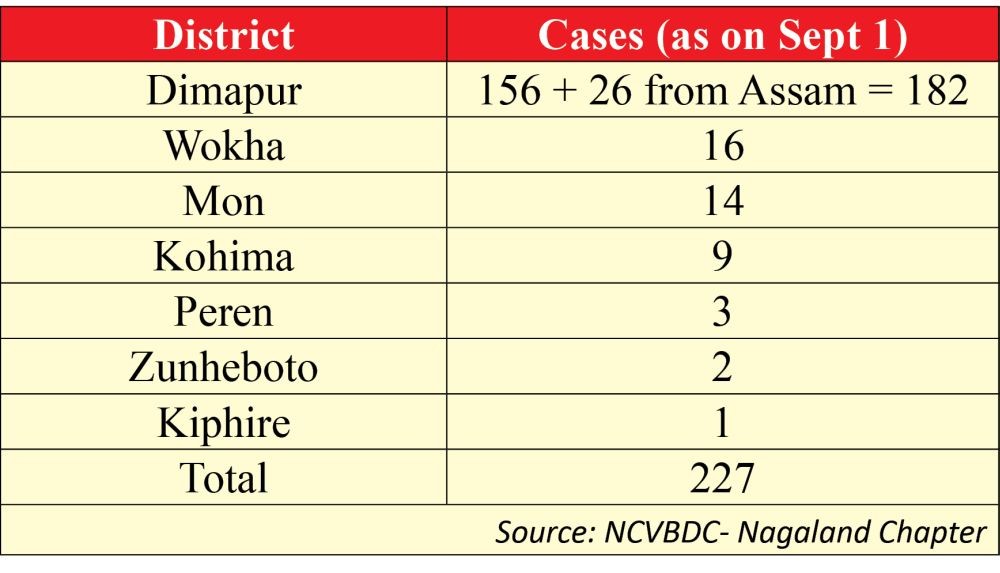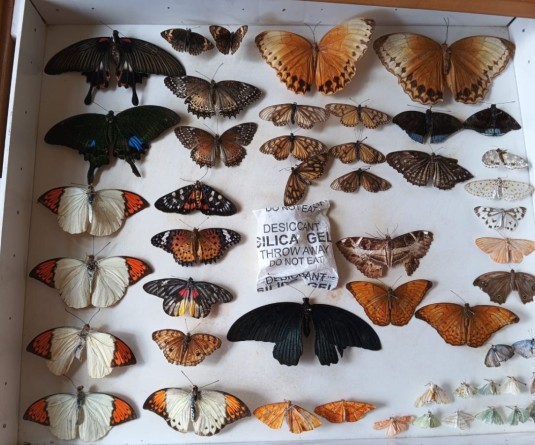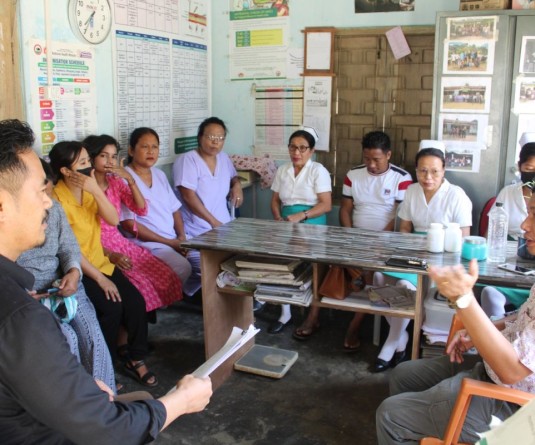
Hospitals, blood bank under strain as dengue sweeps Dimapur
Morung Express News
Dimapur | September 2
As on September 1, Nagaland recorded a total of 227 confirmed dengue cases. Dimapur accounted for 182 of the total state tally with 26 of the cases attributed to patients brought for treatment from places in Assam bordering Dimapur. As per the government records, the mosquito-borne ailment has been reported from 7 districts. (See table)
Officially, there has been no record of fatality since the first dengue cases were reported around June-July, this year.
Going by the dengue count revealed by the Nagaland chapter of the National Center for Vector Borne Diseases Control (NCVBDC) on September 1, the state reported 115 cases in the month of August as against the 67 cases recorded as on July 31.
On August 19, Dimapur had 127 cases, not counting the 22 cases brought from Assam. The figure for Dimapur increased to 156 on September 1, not counting the 26 cases brought from Assam. There was no information on the positivity rate.
Official data vs ground situation
Meanwhile, the situation on the ground seemed to project a rather grim reality contradicting the official NCVBDC data. Medical centres in Dimapur and Chümoukedima with in-patient care continued to report increasing number of admissions of people with dengue-like symptoms testing positive via the Rapid Diagnostic Test (RDT) kit, while requests for platelets transfusions at the only government-run blood bank rose correspondingly.
The Morung Express spoke with a number of medical professionals, working at different health centres, who reported of hospitals running full.
According to one doctor at the Eden Medical Centre, the hospital has had an increased admission of patients with telltale dengue symptoms since the outbreak. It has so far reported 132 such cases, which tested positive in the RDT, to the government laboratory for confirmatory ELISA test, of which only 8 were confirmed positive. This figure was from August 23 while the results of samples reported later were pending.
The RDT, also known as the NS 1 Antigen test, is said to give false positives in about 10 percent of cases.
The CIHSR was also going through a similar situation. A doctor there informed that it has on average no less than 30 dengue cases admitted daily.
“There are cases where patients are getting tested in private laboratories,” the doctor said, while adding that some of those cases do not get reported.
The doctor noted an increased number of cases, in 2023, with a noted rise in severity. The hospital was said to have had 2 dengue fatalities but it was not officially verified.
A private nursing home, name withheld on request, informed that it has handled over 126 patients, with dengue-like symptoms and who tested positive in the RDT, starting August 1 to September 2. From August 29-31, 27 patients tested positive. It could not be ascertained how many of the samples returned positive in the confirmatory test.
A Health Department official maintained that the Department is not downplaying the situation. The official maintained that the Department is following the standard procedure recommended by the Union Health Ministry and the ICMR for dengue surveillance.
As per the standing directive from the state Health Department, all medical centres, including diagnostic centres, are to report any suspected dengue cases to the two designated government laboratories, located in Dimapur and Kohima. It implies sending blood samples of the suspected cases for confirmatory ELISA test.
“Unless it is confirmed by the test recommended by the ICMR, a sample detected via RDT kit is not counted as dengue positive,” the official maintained.
State NCVBDC programme officer, Dr Niesakho Kire, held the same view on this. Queried on the high platelet requests phenomenon attributed to dengue, currently observable in Dimapur, he replied that he cannot authoritatively comment on it as “Treating physicians know best how to deal with a medical case.”
A private physician acknowledged the incidence of false positives but maintained that merely attributing the high admission rate to false positives is not the answer.
Another held the NCVBDC figure as not representing the actual ground scenario. “Hospitals are running full, patients are getting really sick, and platelets are dropping alarmingly. Should the government be waiting for people to come and get tested?” The doctor held that the Health Department should be deploying its personnel to all health centres for surveillance and collect samples rather than waiting for samples to come its way.
Other doctors called for greater coordination not only between the government and private health establishments but also stronger community awareness and participation. “Dengue outbreaks happen seasonally, only that there are more cases this year. It is nature's way of saying tidy up,” commented one.
Platelets rush
At the Blood Bank, attached to the Dimapur District Hospital, there was no let up to the rush for platelets. It handled over 540 requests for platelets during a four-day period from August 29 September 1, averaging 135 units a day. The highest was on August 30 when it received requisitions for around 160 units.
The rush has given rise to fear of the blood component separator breaking down. If it breaks down, the blood bank in-charge said that the next facility would be Guwahati.
He also posted a note in a local doctors’ WhatsApp forum calling for rationalizing platelets transfusion. He told this newspaper, “It is not the absolute platelets count but early clinical signs of bleeding tendency which must decide platelets transfusion.”
On this, a clinician said that the threshold for platelets transfusion is when it drops to 20,000 per microlitre.
The Blood Bank in-charge further informed that the state Health Minister has asked him to immediately “put up a quotation for a new blood component separator machine.”




.jpg)
